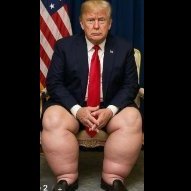Report Philippines Renews Focus on Transport Modernisation Amid Challenges
-
Recently Browsing 0 members
- No registered users viewing this page.
-
Topics
-
-
Popular Contributors
-
-
Latest posts...
-
77
-
159
US banks refuse Trump's business
Did you know that Tim Cook is part of the LGBTQ+ community, and is supported by Trump? You see when it suits trump, e.g. put money in HIS pockets, he doesn't have objections to it. https://finance.yahoo.com/news/apple-is-back-on-trumps-good-side-the-cost-600-billion-113413035.html Apple (AAPL) on Wednesday announced it is increasing its US investment commitments over the next four years to $600 billion, tacking $100 billion onto the original $500 billion the company said it would invest back in February. The tech giant revealed its latest spending plan during a press briefing in the Oval Office alongside President Trump, during which CEO Tim Cook presented the president with a glass plaque complete with a gold base, all made in the US. But during the event, Trump said Apple, as well as other companies that invest in the US, would be exempt from that 100% tariff. The White House also said Wednesday that Apple would largely escape Trump’s planned 50% tariff on US-bound Indian exports. -
33
Report Thai Government Addresses Confusion Over Poker Policy
Absolutely! I play for fun with friends quite often. -
196
Middle East Gaza: We are dying slowly, save us !
For practical reasons, it is virtually impossible to have journalists in an active combat zone who aren't embedded. -
77
An Operating Manual for Understanding the Thai Mind
Most, but not all, judging from my personal experience. HVAC guys are not all geniuses, for sure. Just my very humble opinion. -
59
Big C now cheaper than expat shops
Is this petite marmite also popular with the Mennonites?
-
-
Popular in The Pub



.thumb.jpg.a649cacedeeccbc218adc073bf668ef2.jpg)





Recommended Posts
Create an account or sign in to comment
You need to be a member in order to leave a comment
Create an account
Sign up for a new account in our community. It's easy!
Register a new accountSign in
Already have an account? Sign in here.
Sign In Now